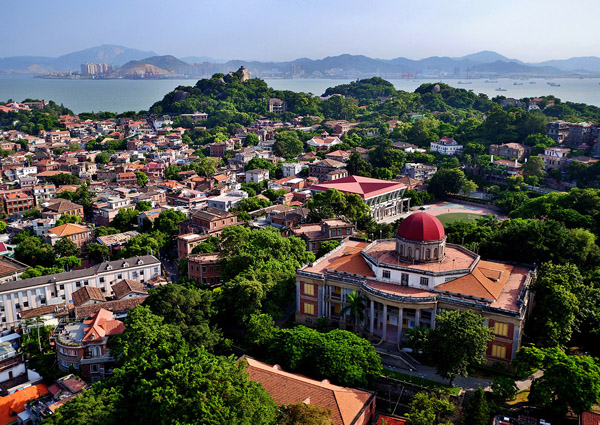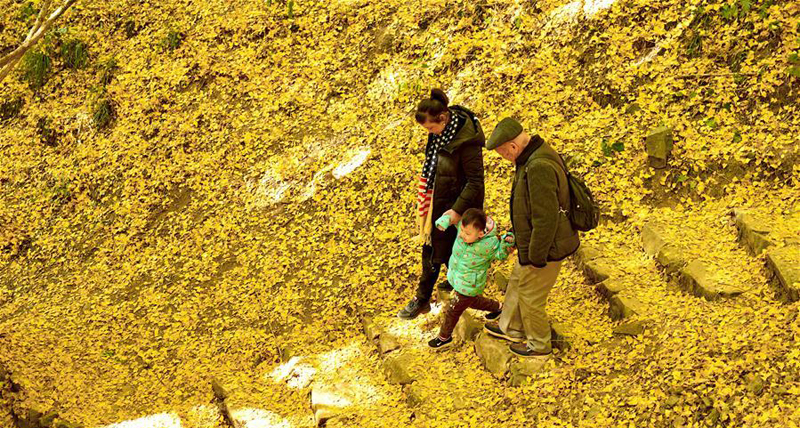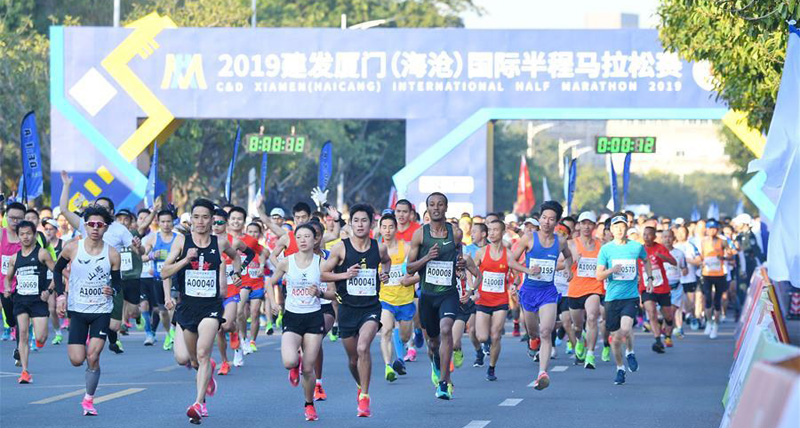Guarding Gulangyu: Revised policies allow business, tourism, sustainability on renowned island
CGTN| Updated: Jul 19, 2019

Just off the coast of the southeastern Chinese city of Xiamen lies the island of Gulangyu. The scenic destination has long been coveted for its unique building designs and European influence. Yet over the past decade, it's become a magnet for tourists, attracting millions more people than before. CGTN reporter Omar Khan takes us a look at how the island is balancing both fame and efforts to preserve its natural beauty.
Seemingly just a stone's throw from the city center of Xiamen, Gulangyu Island is an escape to the past, where a fusion of culture and architecture remain to this day. Defined by its 19th century European buildings, the UNESCO Heritage Site has maintained the history of what was once a colonial and international settlement. Yet in recent years, Gulangyu's winding alleyways and sandy beaches have attracted an overabundance of tourists, from both home and abroad.
OMAR KHAN GULANGYU ISLAND, FUJIAN PROVINCE "For an island that's not even 2 square kilometers in size, there's a reasonable concern when it comes to preserving both history and culture. And to try and keep that authentic feel, the island has no cars or bicycles and has a daily limit of 50-thousand visitors. But for a scenic location that's witnessed commercialization, are these measures really enough?"
Some locals, who have spent most of their lives on the island, believe that ensuring Gulangyu's aesthetics and ambiance, goes beyond rules and regulations. And one man, who's called the island home for 70 years, places that onus directly on himself.
DONG QINONG CHAIRMAN, GULANGYU SCENIC VOLUNTEERS ASSOCIATION "I'd say protecting the island is a duty we are bound to. We have a responsibility to preserve it, especially given Gulangyu's cultural context. The business climate here should be controlled as well. Some of the work we do is voluntary, because as locals, it is upon us to love this island."
Despite the island's attempts to balance tourism with its variety of cultures and distinct features, Dong Qinong believes Gulangyu's pluralistic society has seen considerable change over the past few decades.
DONG QINONG CHAIRMAN, GULANGYU SCENIC VOLUNTEERS ASSOCIATION "Gulangyu has gone through several stages, becoming a more residential community for visitors. Before 2003 there were less than 1 million tourists per year, now there are more than 10 million. A lot of work has been done when it comes to protecting old buildings and making rational use of them given the current circumstances."
Luckily for both residents and visitors, the local government has recognized the influx of businesses and has strived to address these concerns.
ZHENG YILIN DIRECTOR, GULANGYU ADMINISTRATIVE COMMITTEE "Business on the island has indeed been a controversial issue for all walks of life. Therefore, we've strengthened the management of business operations, formulating guidelines and prohibiting certain projects. For example, we encourage residents to open their old villas and showcase cultural exhibitions."
Earlier this month authorities updated the island's policies on protecting cultural heritage, while also implanting a more global standard. But for the most part on this small and quaint island, history and business appear to be moving forward together. Omar Khan, CGTN, on Gulangyu Island, Fujian Province.
This story is orginally published on CGTN.



 play
play